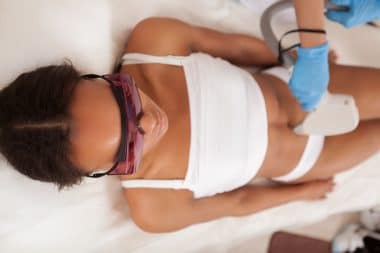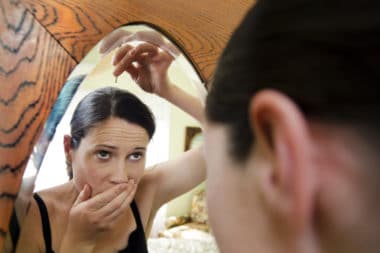Men can get by with losing their hair after a certain age. A man with a bald patch, in the eyes of some women, looks distinctive. Even a man who’s completely lost his hair can still be thought of as sexy. With women, it’s a different story. Long, healthy hair is a mark of femininity in women. How many beauty contest winners have you seen with a big bald patch? That’s why most women don’t take kindly to thinning hair or, heaven forbid, a bald patch. Still, women can and do experience hair loss, especially after menopause. In fact, one third of women experience hair loss at some times during their lives. What causes hair loss in women?
The Most Common Cause of Hair Loss in Women
In most women, hair loss is genetic, due to a condition called androgenetic alopecia. Androgenetic alopecia causes hair loss most obvious around the crown of the head. If you have this genetic form of hair loss, you may notice your part begins to gradually widen. Most women with andogenetic alopecia develop diffuse thinning rather than bald patches or complete hair loss. If your mom has a thinning hairline, you may be at risk too.
Medical Causes of Female Hair Loss
Some medical problems can cause hair thinning. One of the most common is an underactive thyroid gland. A simple blood test can tell you whether you have a sluggish thyroid. Usually, with an underactive thyroid, you’ll have other symptoms like weight gain, fatigue, feeling cold most of the time, constipation or depression. Even if you lack these symptoms, it’s a good idea to have your doctor check your thyroid if you start to lose hair.
Other causes of hair loss include certain medications, anemia, cancer chemotherapy, pregnancy and childbirth, surgery, crash dieting, a prolonged illness and some autoimmune diseases. Stress can cause hair loss too. More than thirty different medical conditions can cause hair thinning. That’s why it’s important to get a physical if you notice you’re losing more hair than usual.
A condition called alopecia areata is another cause of hair loss. In alopecia areata, the immune system attacks healthy hair follicles and damages them. Fortunately, the hair loss is temporary and usually grows back within six to eight months. A fungal infection called ringworm can also cause patchy areas of hair loss. With these conditions, the bald patches are itchy, flaky and red. Ringworm responds to anti-fungal medication.
Menopause
Hormonal changes with menopause triggers hair loss in some women. When hormone levels begin to change during perimenopause and menopause is when many women first notice hair thinning due to androgenetic alopecia. If you’re losing hair after menopause it may be related to androgentic alopecia.
Are You Contributing to the Problem?
Not all hair loss is due to genetics, menopause or health problems. Sometimes hair loss is self-inflicted. Self-inflicted hair loss is hair loss that comes from excessive chemical treatments like perms and bleaching. In most cases, chemical treatments cause hair breakage rather than patchy hair loss.
Wearing your hair in a tight ponytail or wearing hair extensions can cause hair thinning by pulling on your hair to the point that it weakens and breaks. Hair loss of this type is called traction alopecia. To correct it, stop placing traction on your hair by wearing extensions and tight ponytails.
Do You Really Have Hair Loss?
Before assuming you have a serious problem with hair loss, make sure you really do. Most people lose between 50 and 100 hairs per day. That’s completely normal. On the other hand, if you find patches of hair on your pillow in the morning or have a receding hairline or a bald spot, that’s not normal. Fortunately, there are more treatments than ever these days for hair loss.








Reply